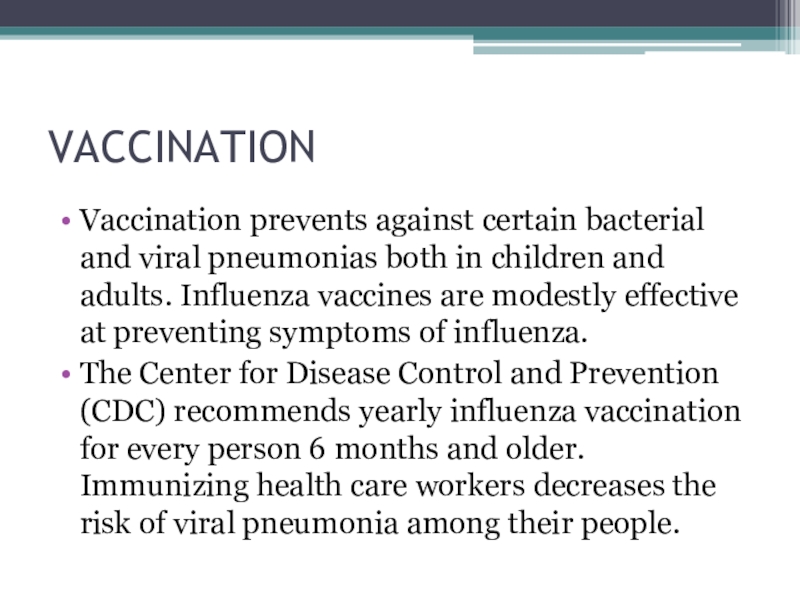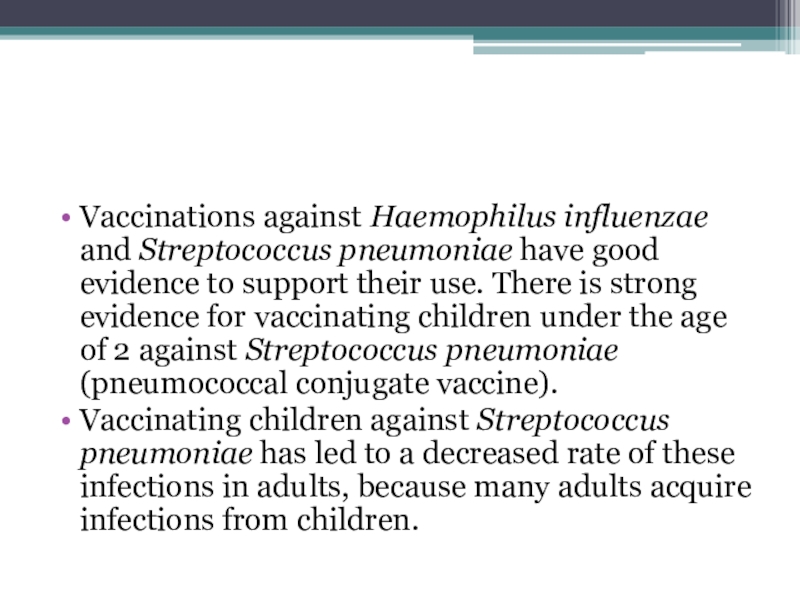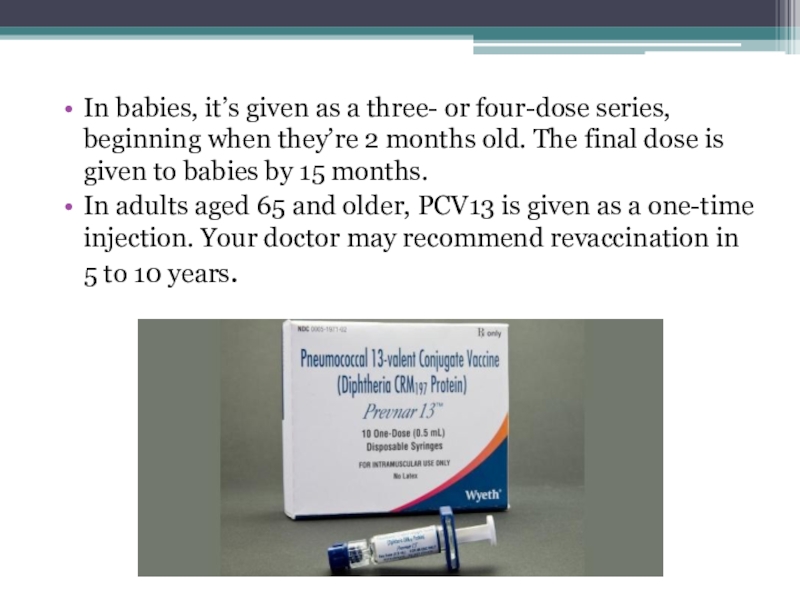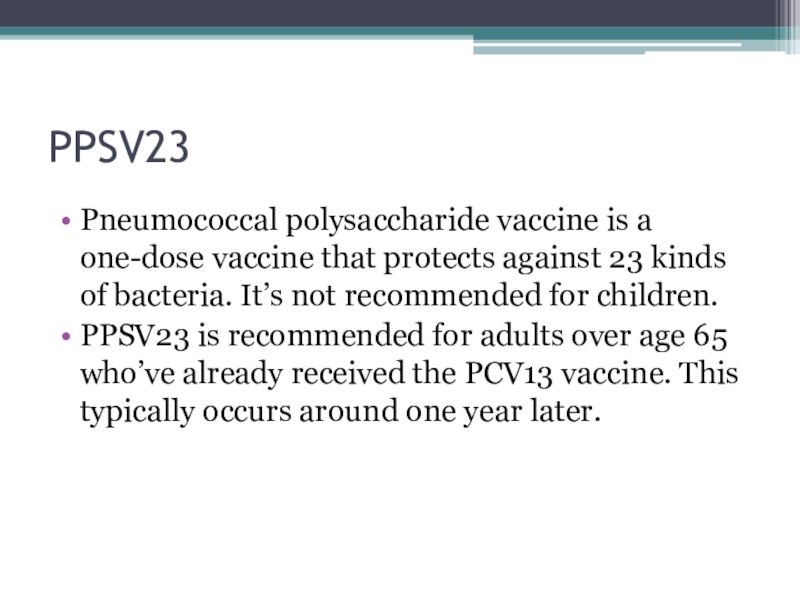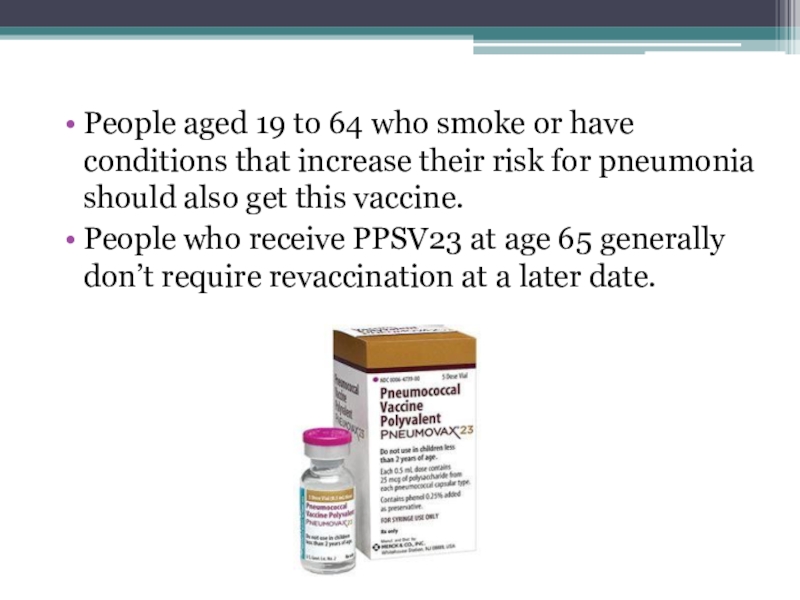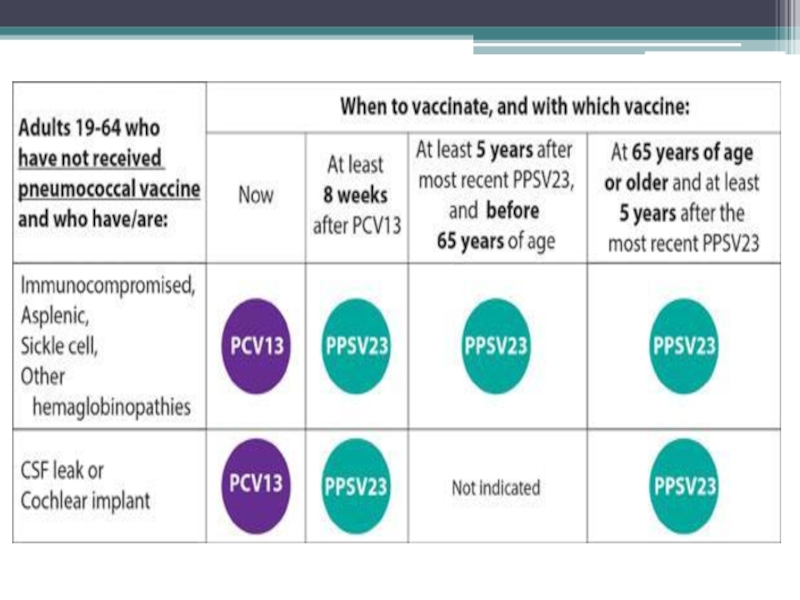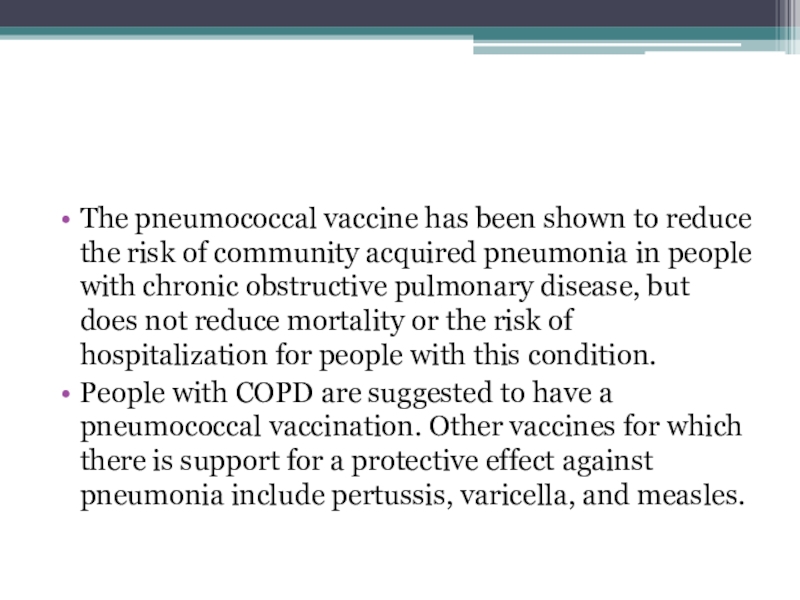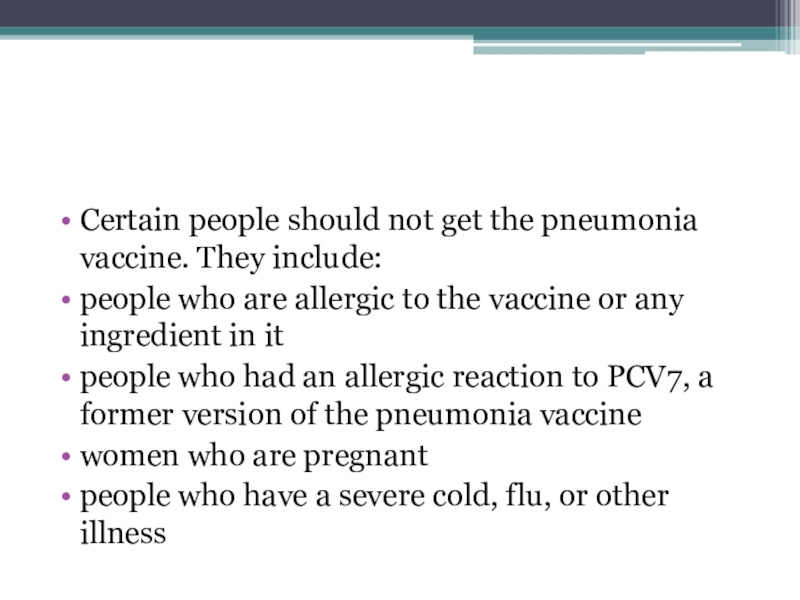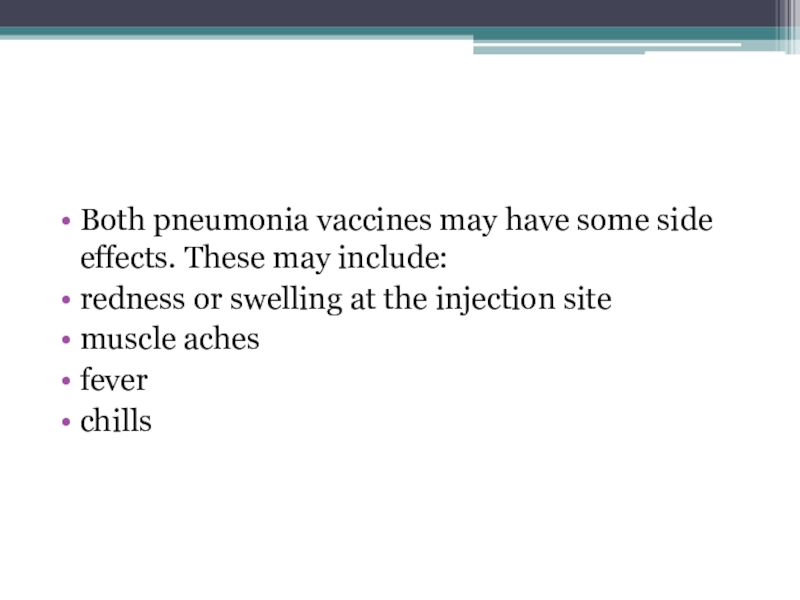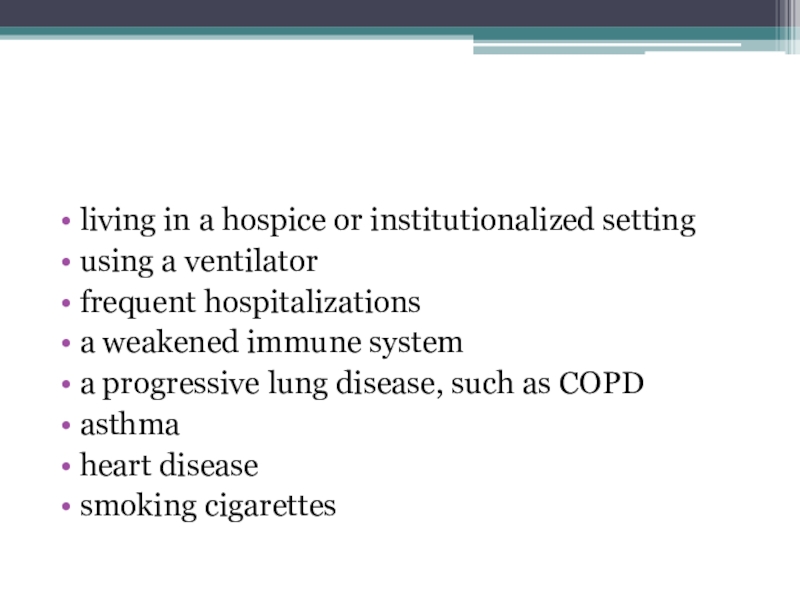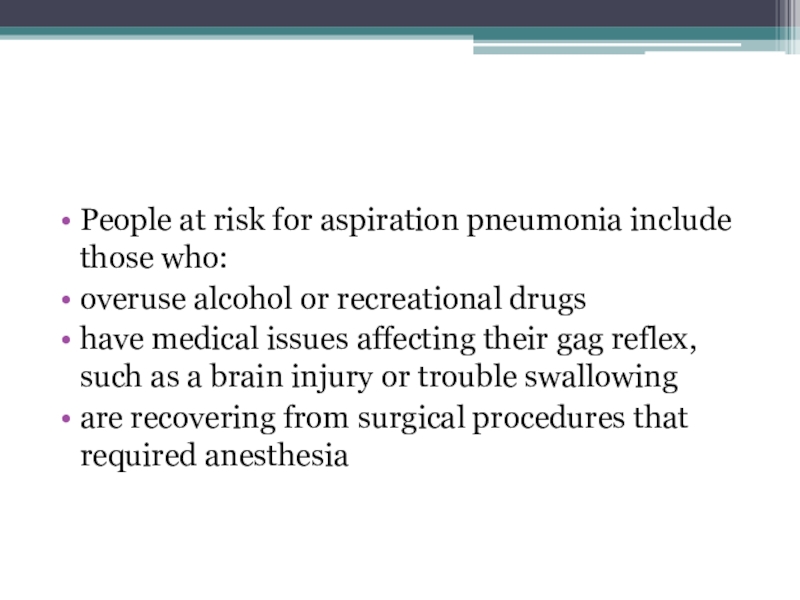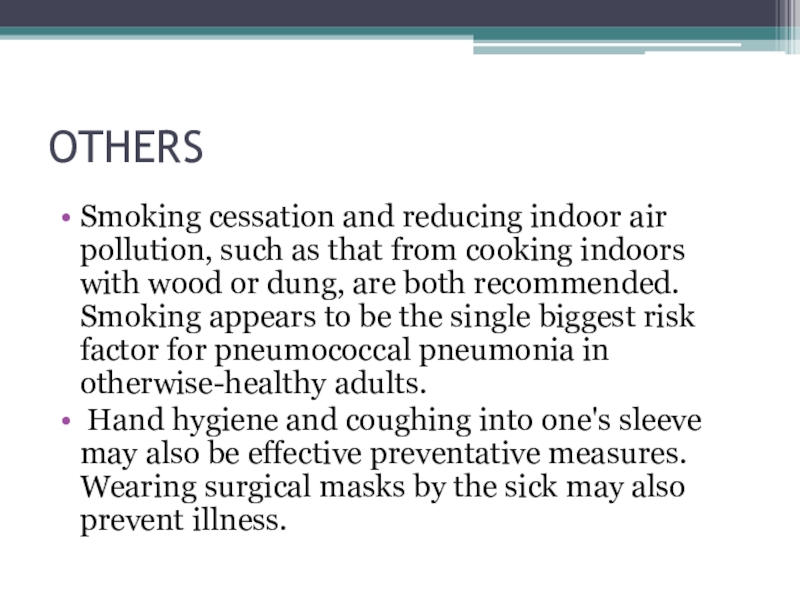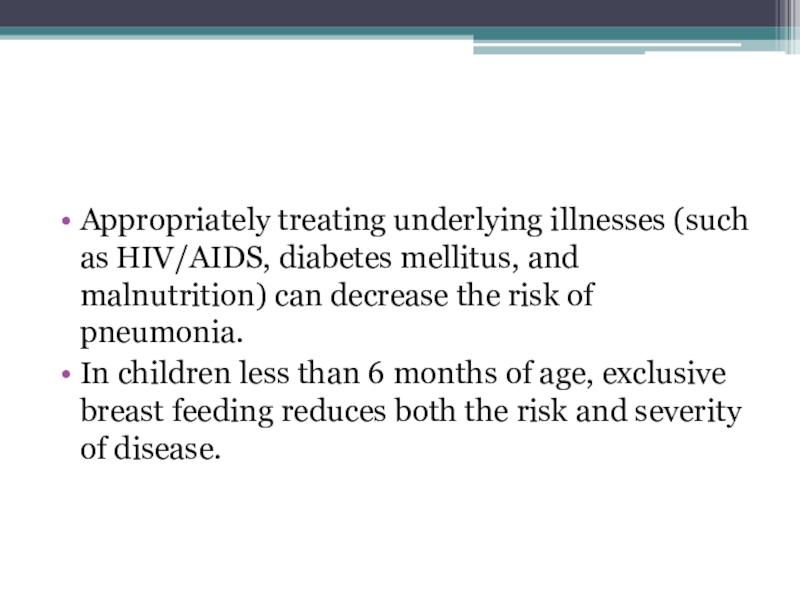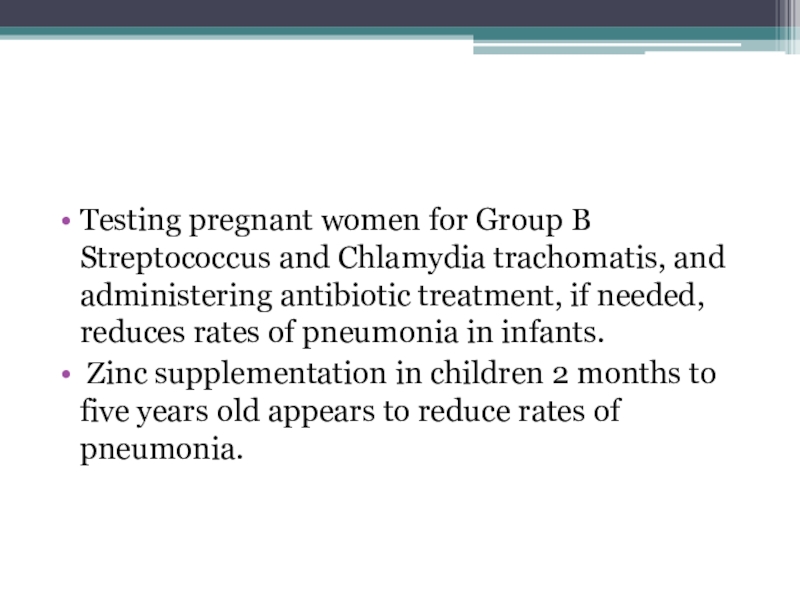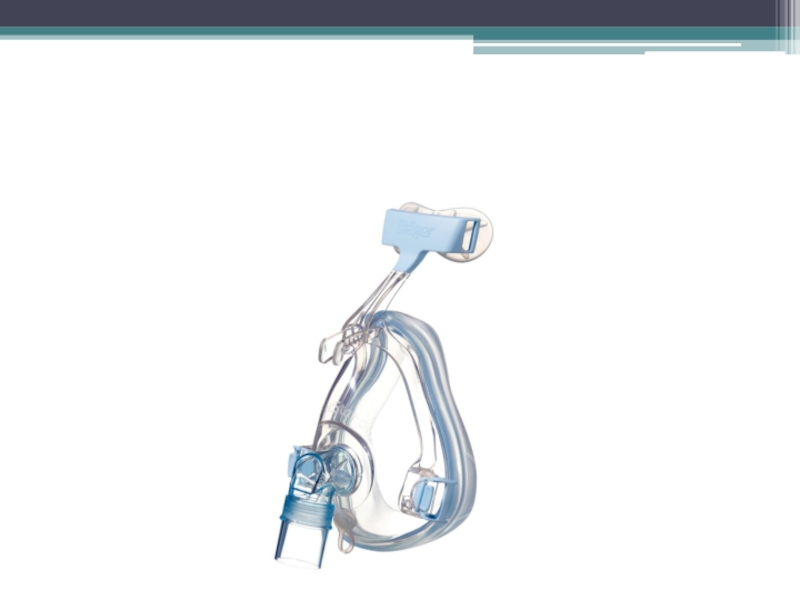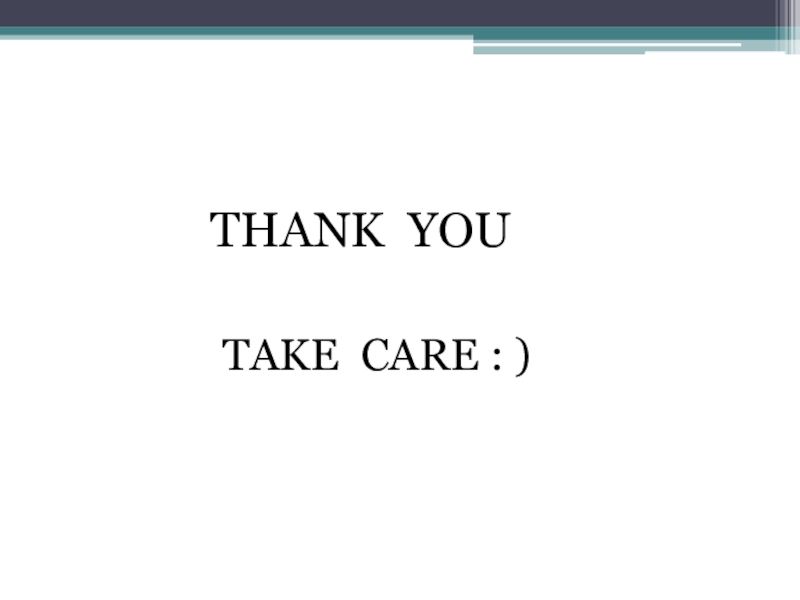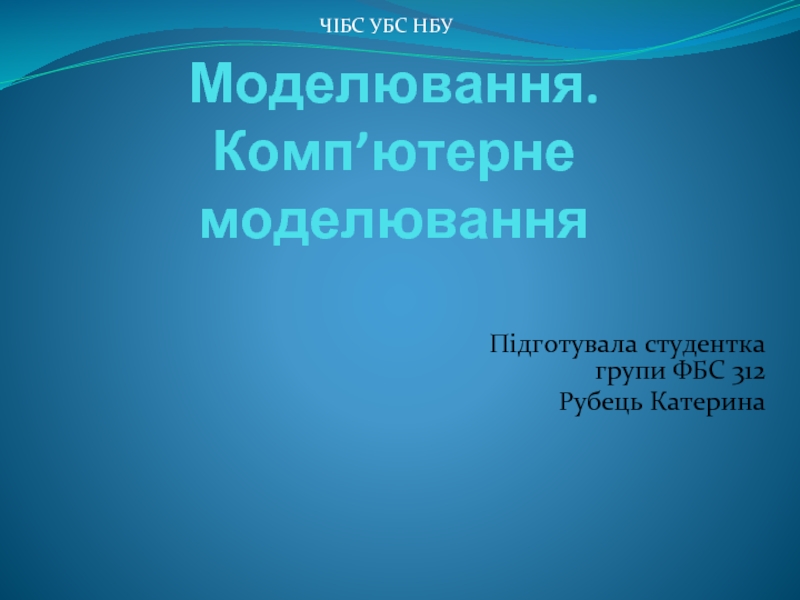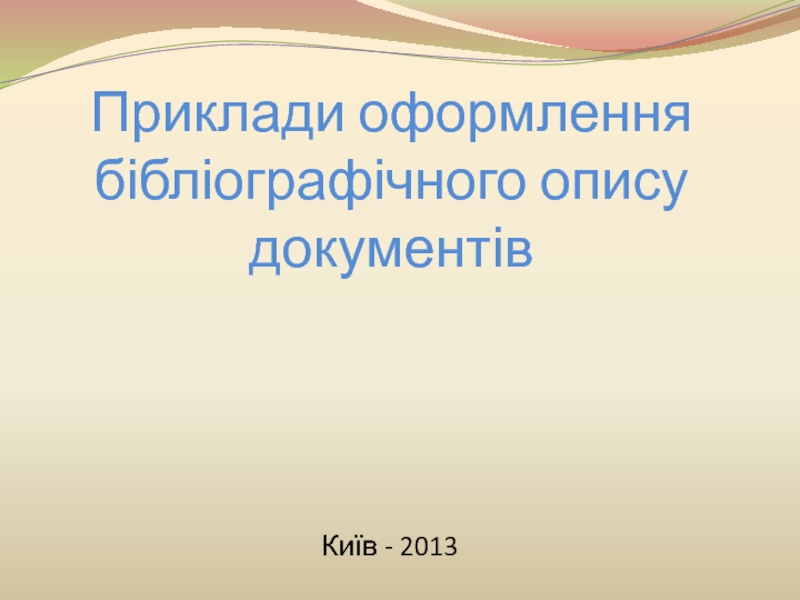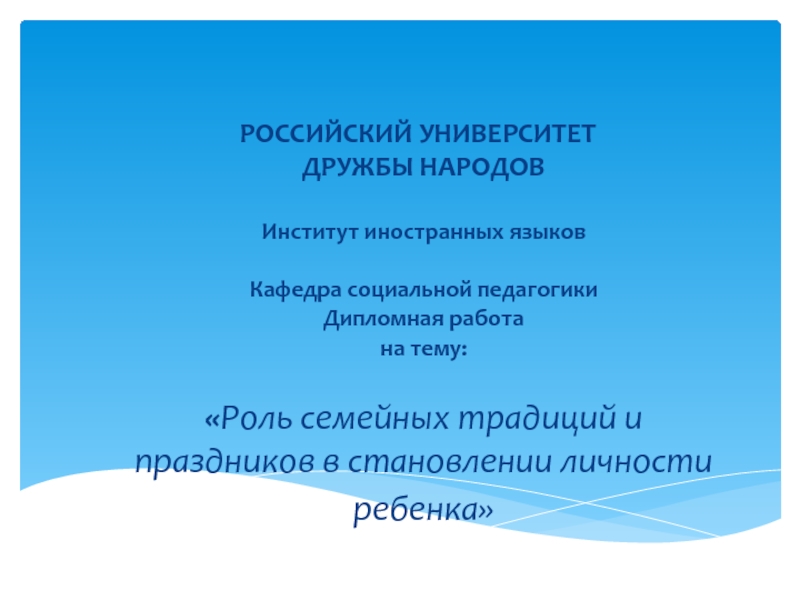Слайд 1PROPHYLACTICS OF PNEUMONIA
VACCINATION
JOISY ALOOR
LEONARD SHAJU
Слайд 2ACCORDING TO WHO
Pneumonia accounts for 15% of all deaths of
children under 5 years old, killing 808 694 children in
2017.
Pneumonia can be caused by viruses, bacteria, or fungi.
Pneumonia can be prevented by immunization, adequate nutrition, and by addressing environmental factors.
Pneumonia caused by bacteria can be treated with antibiotics, but only one third of children with pneumonia receive the antibiotics they need.
Слайд 3EPIDEMIOLOGY
Pneumonia is a common illness affecting approximately 450 million people
a year and occurring in all parts of the world.
It is a major cause of death among all age groups resulting in 4 million deaths (7% of the world's total death) yearly.
Rates are greatest in children less than five, and adults older than 75 years. It occurs about five times more frequently in the developing world than in the developed world. Viral pneumonia accounts for about 200 million cases. In the United States, as of 2009, pneumonia is the 8th leading cause of death.
Слайд 6TREATMENT
Pneumonia should be treated with antibiotics. The antibiotic of choice
is amoxicillin dispersible tablets. Most cases of pneumonia require oral
antibiotics, which are often prescribed at a health centre.
These cases can also be diagnosed and treated with inexpensive oral antibiotics at the community level by trained community health workers. Hospitalization is recommended only for severe cases of pneumonia.
Слайд 7PREVENTION
Preventing pneumonia in children is an essential component of a
strategy to reduce child mortality. Immunization against Hib, pneumococcus, measles
and whooping cough (pertussis) is the most effective way to prevent pneumonia.
Adequate nutrition is key to improving children's natural defenses, starting with exclusive breastfeeding for the first 6 months of life. In addition to being effective in preventing pneumonia, it also helps to reduce the length of the illness if a child does become ill.
Слайд 8Addressing environmental factors such as indoor air pollution (by providing
affordable clean indoor stoves, for example) and encouraging good hygiene
in crowded homes also reduces the number of children who fall ill with pneumonia.
In children infected with HIV, the antibiotic cotrimoxazole is given daily to decrease the risk of contracting pneumonia.
Слайд 9PREVENTION BY WHO
The WHO and UNICEF integrated Global action plan
for pneumonia and diarrhoea (GAPPD) aims to accelerate pneumonia control
with a combination of interventions to protect, prevent, and treat pneumonia in children with actions to:
Protect children from pneumonia including promoting exclusive breastfeeding and adequate complementary feeding;
Слайд 10Prevent pneumonia with vaccinations, hand washing with soap, reducing household
air pollution, HIV prevention and cotrimoxazole prophylaxis for HIV-infected and
exposed children.
Treat pneumonia focusing on making sure that every sick child has access to the right kind of care -- either from a community-based health worker, or in a health facility if the disease is severe -- and can get the antibiotics and oxygen they need to get well.
Слайд 11A number of countries including Bangladesh, India, Kenya, Uganda and
Zambia have developed district, state and national plans to intensify
actions for the control of pneumonia.
Many more have integrated pneumonia specific action into their national child health and child survival strategies. For many countries the post Millenium Development Goal agenda has explicitly included ending pneumonia deaths as a priority action.
Слайд 12Prevention includes vaccination, environmental measures and appropriate treatment of other
health problems.[19] It is believed that, if appropriate preventive measures
were instituted globally, mortality among children could be reduced by 400,000; and, if proper treatment were universally available, childhood deaths could be decreased by another 600,000.
Слайд 13VACCINATION
Vaccination prevents against certain bacterial and viral pneumonias both in
children and adults. Influenza vaccines are modestly effective at preventing
symptoms of influenza.
The Center for Disease Control and Prevention (CDC) recommends yearly influenza vaccination for every person 6 months and older. Immunizing health care workers decreases the risk of viral pneumonia among their people.
Слайд 14Vaccinations against Haemophilus influenzae and Streptococcus pneumoniae have good evidence
to support their use. There is strong evidence for vaccinating
children under the age of 2 against Streptococcus pneumoniae (pneumococcal conjugate vaccine).
Vaccinating children against Streptococcus pneumoniae has led to a decreased rate of these infections in adults, because many adults acquire infections from children.
Слайд 16PCV13
The pneumococcal conjugate vaccine prevents against 13 kinds of bacteria
that cause serious infections in children and adults.
PCV13 is
part of the standard vaccination protocol for babies and is administered by a pediatrician.
Слайд 17In babies, it’s given as a three- or four-dose series,
beginning when they’re 2 months old. The final dose is
given to babies by 15 months.
In adults aged 65 and older, PCV13 is given as a one-time injection. Your doctor may recommend revaccination in 5 to 10 years.
Слайд 18PPSV23
Pneumococcal polysaccharide vaccine is a one-dose vaccine that protects against
23 kinds of bacteria. It’s not recommended for children.
PPSV23
is recommended for adults over age 65 who’ve already received the PCV13 vaccine. This typically occurs around one year later.
Слайд 19People aged 19 to 64 who smoke or have conditions
that increase their risk for pneumonia should also get this
vaccine.
People who receive PPSV23 at age 65 generally don’t require revaccination at a later date.
Слайд 21The pneumococcal vaccine has been shown to reduce the risk
of community acquired pneumonia in people with chronic obstructive pulmonary
disease, but does not reduce mortality or the risk of hospitalization for people with this condition.
People with COPD are suggested to have a pneumococcal vaccination. Other vaccines for which there is support for a protective effect against pneumonia include pertussis, varicella, and measles.
Слайд 22Certain people should not get the pneumonia vaccine. They include:
people
who are allergic to the vaccine or any ingredient in
it
people who had an allergic reaction to PCV7, a former version of the pneumonia vaccine
women who are pregnant
people who have a severe cold, flu, or other illness
Слайд 23Both pneumonia vaccines may have some side effects. These may
include:
redness or swelling at the injection site
muscle aches
fever
chills
Слайд 24living in a hospice or institutionalized setting
using a ventilator
frequent hospitalizations
a
weakened immune system
a progressive lung disease, such as COPD
asthma
heart disease
smoking cigarettes
Слайд 25People at risk for aspiration pneumonia include those who:
overuse alcohol
or recreational drugs
have medical issues affecting their gag reflex, such
as a brain injury or trouble swallowing
are recovering from surgical procedures that required anesthesia
Слайд 26Tips for avoiding postoperative pneumonia (pneumonia after surgery) include:
deep breathing
and coughing exercises, which your doctor or nurse will walk
you through
keeping your hands clean
keeping your head elevated
oral hygiene, which includes an antiseptic such as chlorhexidine
sitting as much as possible, and walking as soon as you are able
Слайд 27OTHERS
Smoking cessation and reducing indoor air pollution, such as that
from cooking indoors with wood or dung, are both recommended.
Smoking appears to be the single biggest risk factor for pneumococcal pneumonia in otherwise-healthy adults.
Hand hygiene and coughing into one's sleeve may also be effective preventative measures. Wearing surgical masks by the sick may also prevent illness.
Слайд 28Appropriately treating underlying illnesses (such as HIV/AIDS, diabetes mellitus, and
malnutrition) can decrease the risk of pneumonia.
In children less
than 6 months of age, exclusive breast feeding reduces both the risk and severity of disease.
Слайд 29Testing pregnant women for Group B Streptococcus and Chlamydia trachomatis,
and administering antibiotic treatment, if needed, reduces rates of pneumonia
in infants.
Zinc supplementation in children 2 months to five years old appears to reduce rates of pneumonia.

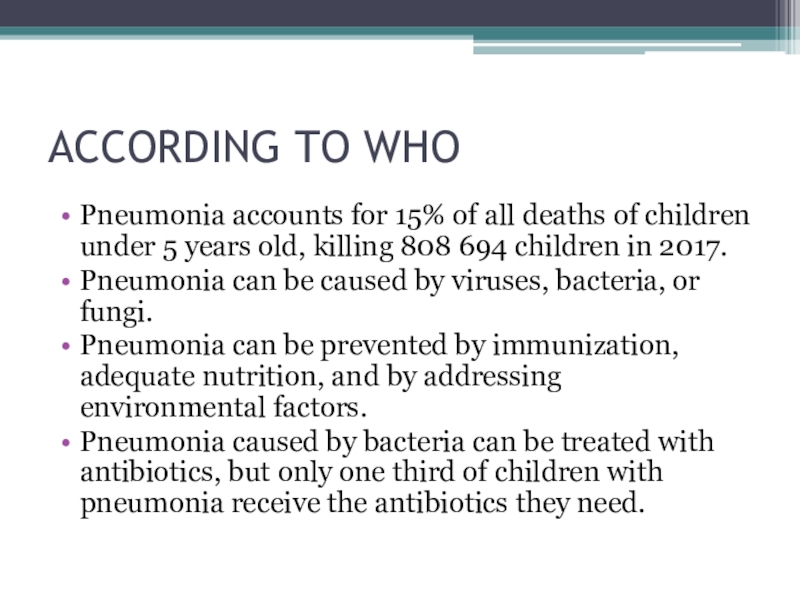
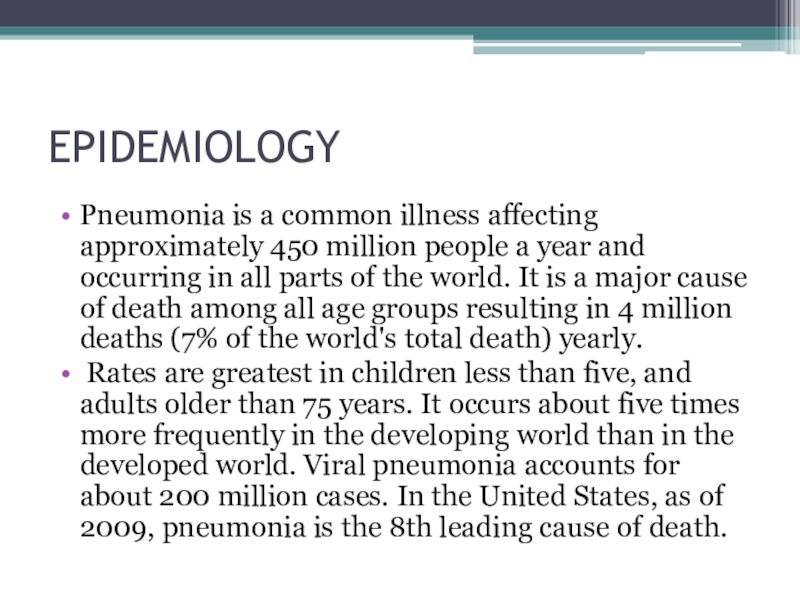
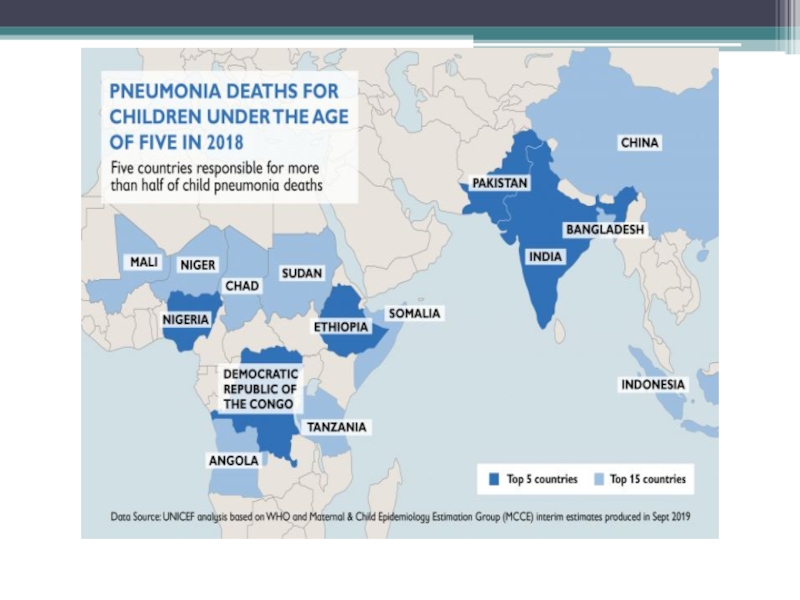

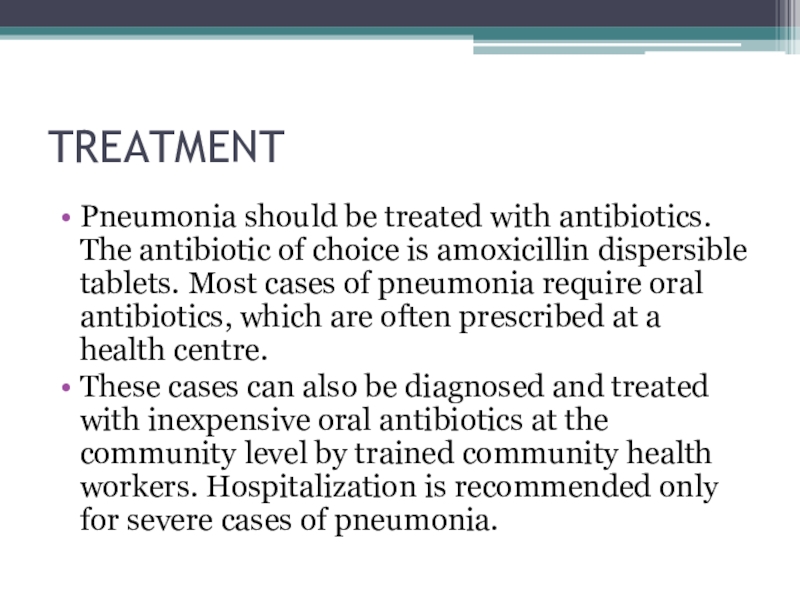
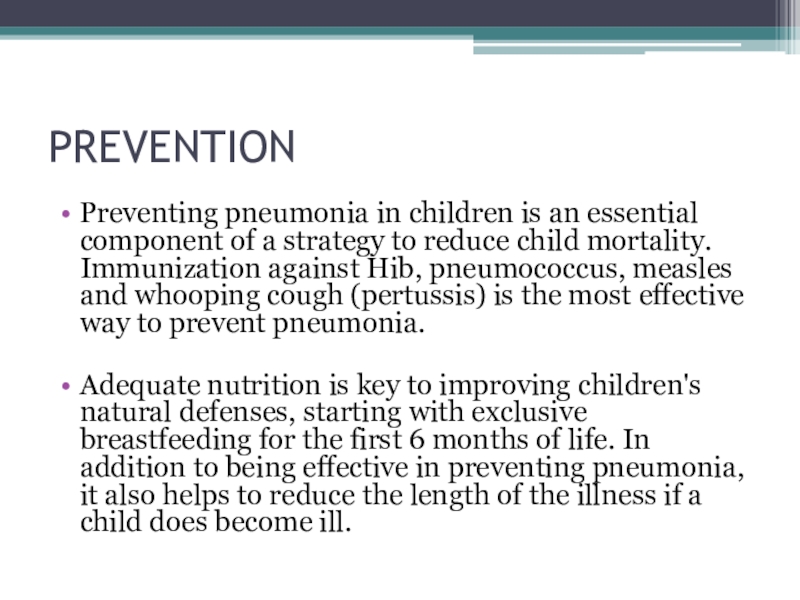
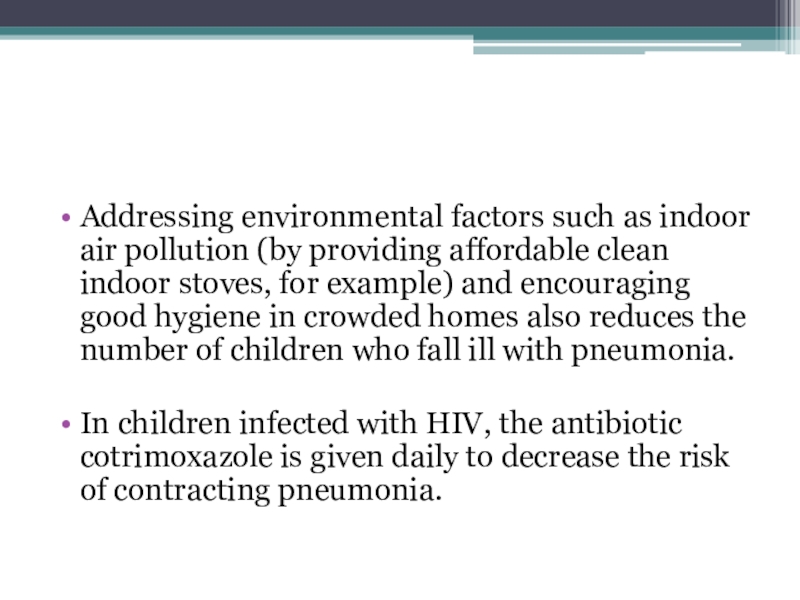
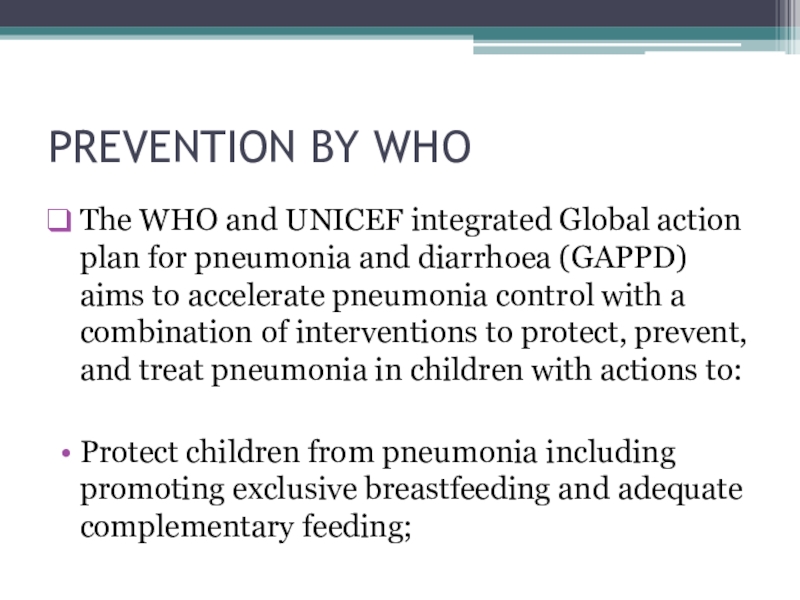
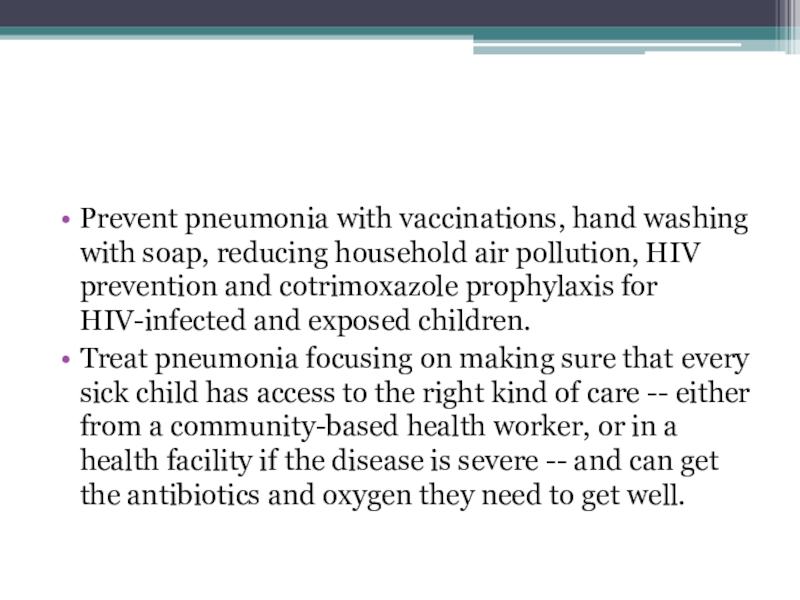
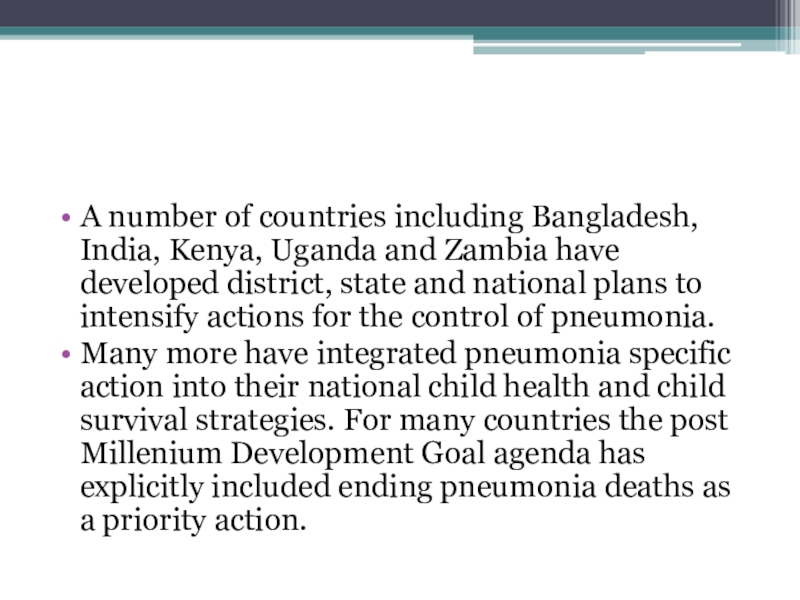
![PROPHYLACTICS OF PNEUMONIA VACCINATION Prevention includes vaccination, environmental measures and appropriate treatment of other health Prevention includes vaccination, environmental measures and appropriate treatment of other health problems.[19] It is believed that, if](/img/tmb/6/504681/9e271e0c75041c9484165dda9162bbf2-800x.jpg)
